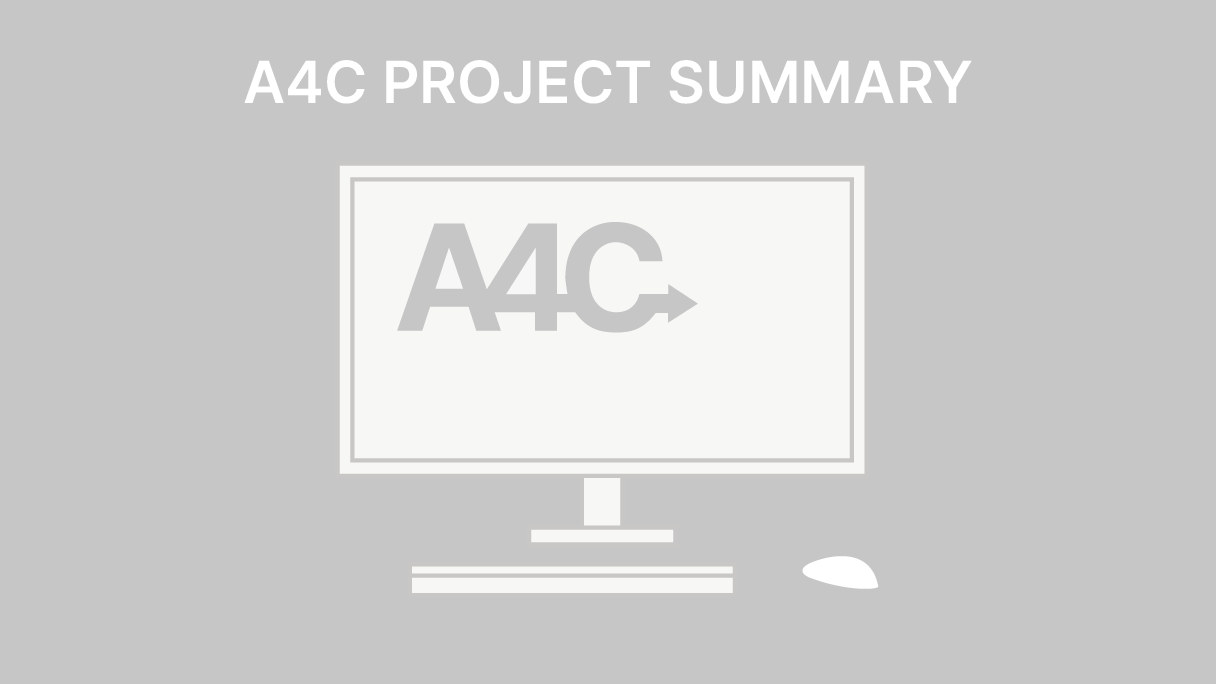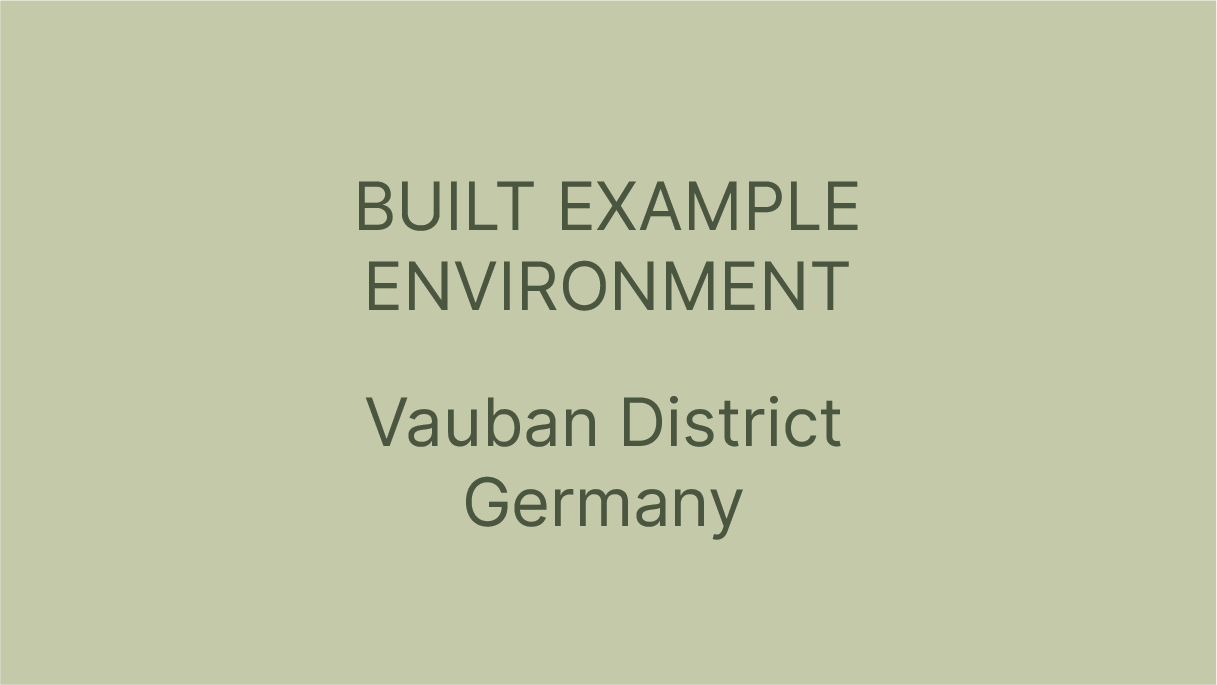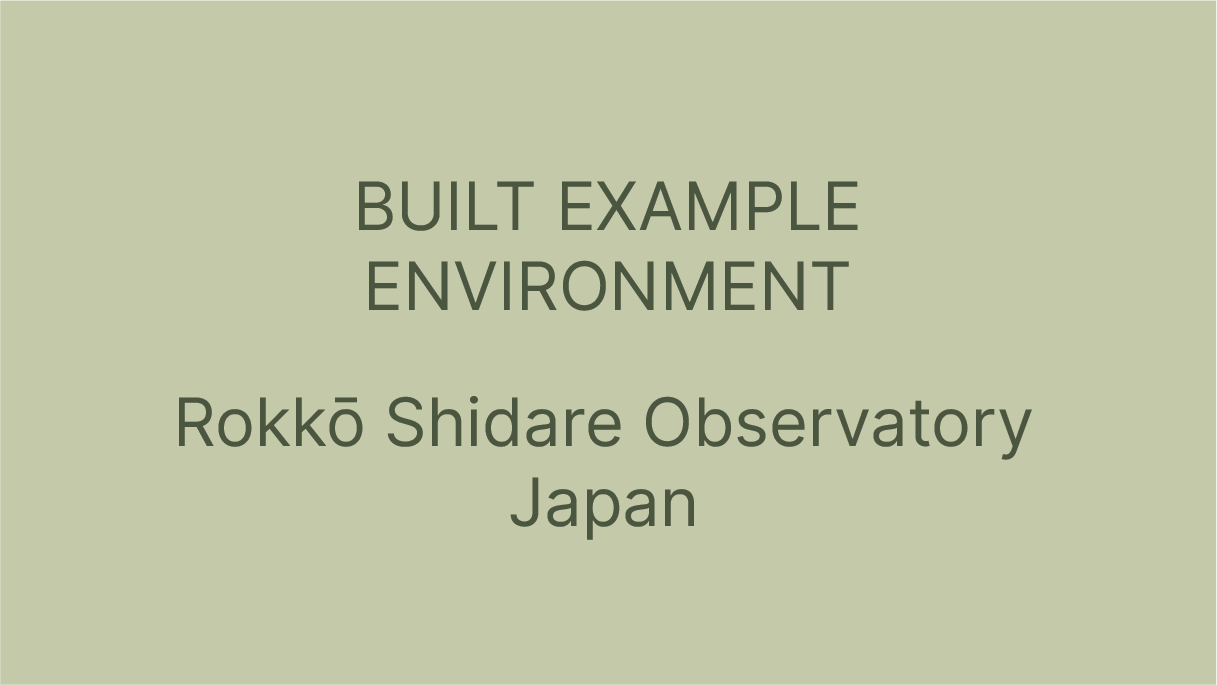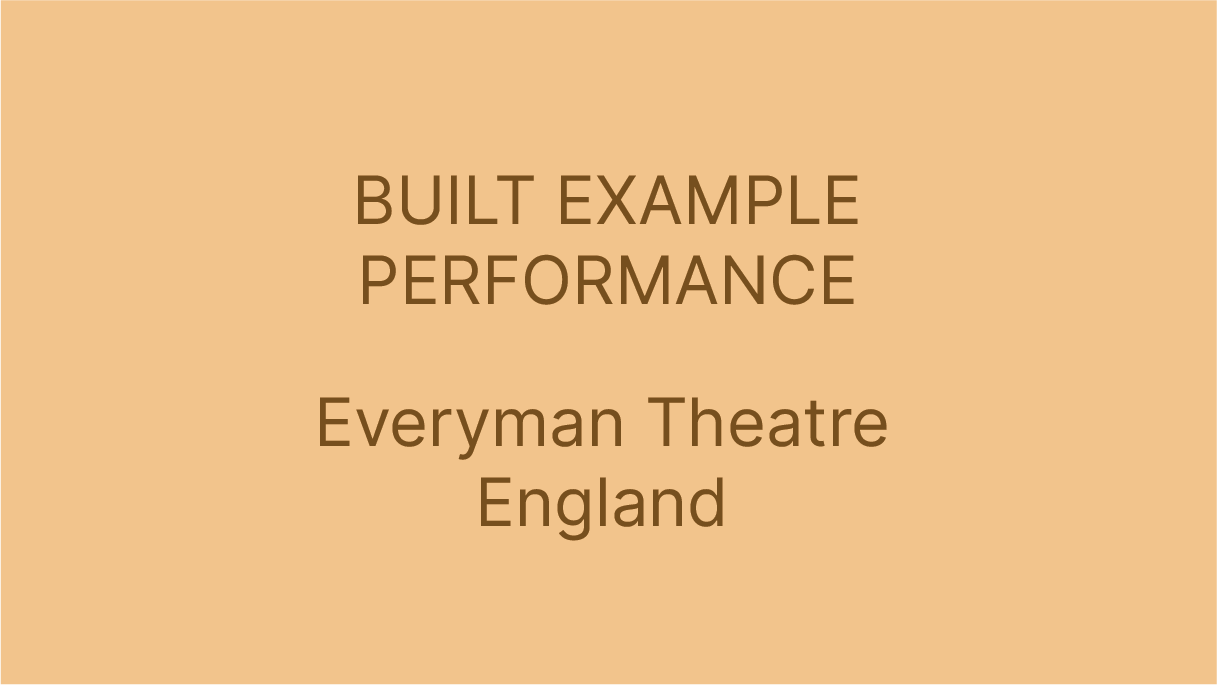Importance of the Living Environment
We often focus on prestigious one-off buildings, but it is the everyday architecture such as housing that is crucial in designing for a more sustainable world, and tackling the climate emergency. This is because people spend a lot of their time in their homes, and significant energy is required to use the spaces. Living also does not take part in the dwelling alone, but takes place in the housing block and in the neighbourhood, i.e. in the wider living environment. And as such we must consider these interconnected scales to ’lock in’ sustainable and healthy lifestyles with reduced impacts on the planet. This is why designing, and getting the ‘everyday living environment’ right, matters. And this must be inclusive and accessible to all.
How to use the 10 themes
There are 10 climate emergency design themes around which the ARCH4CHANGE content is structured. These 10 themes reflect the different aspects to be considered in holistic sustainable architecture approaches. In practice, all of these themes must be met to high standards to create truly sustainable architecture in reality. However, as a student you do not need to know all the 10 themes in-depth from year 1. Instead, future and global responsibility, environment and people and community themes should always be included in each design project in each year of study. Each year, each student then works progressively towards including additional themes until all ten are included in your design project by the end of the studies
5-step Design Process
The 5 step iterative process and 10 climate emergency design themes will help you in the design-decision making process and in justification of your approach. To centre sustainability at the start of your project and refine it throughout you need to undertake integrated design and iterative design processes. Exploring your project’s context helps to make design decisions based on knowledge (Step 1) and helps to define project values and your climate emergency design approach (Step 2). This then sets a good foundation for imagining and testing (Steps 3, 4), and refining your architecture approach based on feedback loops (Step 5). Make sure you communicate your values and climate emergency design approach clearly and explicitly – this helps in the testing and feedback phase
Adaptable Infrastructure
Adaptability ensures that infrastructures keep meeting an individual’s, community’s and society’s changing needs over time, but also includes adapting to a changing climate. Adaptability ensures longevity: it reduces risk of premature building obsolesce and demolition when they no longer meet our needs (because they can be adapted) – this is part of circular thinking and climate change mitigation and adaptation approaches. Adaptability reduces transient communities and supports stability, diversity and community cohesion, this is also part of creating inclusive and equitable infrastructures and long-term resilience. As such your project should put adaptability at its core, at micro, meso and macro-scale. A key aspect of this is the creation of different scenarios and personas over time (e.g., scenarios of possible functions, changing climate, modes of use, etc.) and reflect this in at least one alternative layout (i.e. design) scenario for your project. Ensure that your project also enables future adaptability at different scales.
Inclusive Infrastructure
Designing inclusive infrastructures is an essential part of climate emergency design and is an iterative process that you need to see through all stages of your project design (i.e. explore, define, imagine, test and feedback). Inclusive infrastructures means that inhabitants are part of the design and decision-making process through democratic processes. It also means that spaces can be used and accessed by as many people as possible regardless of age, gender and ability, i.e. they are accommodating and welcoming all. A solution can’t be resilient by itself. It is only resilient when it is adopted and taken ownership of by the community and this is best done through inclusive bottom-up approaches. There are many ways you can include democratic processes and inclusive design in your project, even as a student. For example, you can create a ‘Democratic Design plan’; this helps you to Identify your users (human and non-human), acknowledge and involve your users and to create design approaches that care for your users (including nature & non-humans).
Social Infrastructure
Social infrastructure encourages the connection and coming together of people and this includes formal and informal public & private spaces and places that provide opportunities for people to interact with each other in their everyday lives. Social infrastructures supports the building of social capital in the community; this in turn reduces conflict and increases trust, care, connection and feelings of safety. This helps to build individual and community resilience and health and well-being. In your project, always consider what kind of spaces can bring people together from different walks of life and how you can create links with the existing communities. Be careful to impact the existing social spheres positively and not negatively i.e. restorative actions. Ensure that the social infrastructure you suggest answers to the needs of people and are adaptable to their changing needs in the future, otherwise they will not meet needs and remain unused – so undertake inclusive and democratic processes. Always prioritise inclusion of social infrastructure in each and every project, including retrofitting of social infrastructure as the societal, community and individual benefits are significant.
Green Infrastructure
Green infrastructure is the network of natural green spaces and landscapes within and around urban environments, such as food-growing areas, wetlands, forests, parks and wildlife gardens. Green infrastructure supports biodiversity, enhances ecosystem health, absorbs CO2 and manages adaptations to a changing climate (e.g. flood prevention and overheating). Co-benefits are supporting social activity and human well-being. Your project must tread lightly: after all, placing a new structure is hugely disruptive, as the developed land will have lost its existing ecological value forever. Your choice of site is therefore vital and value and protect existing natural habitats and leave the place better than it was before (i.e. retorative action). To do that, create a green infrastructure plan for your project that identifies and creates a map of the potential impact of your design on existing green infrastructure and on stakeholders and propose remedial measures to ensure a restorative approach. Distribute green spaces of different scales and diversity throughout the city within short walking distances and connect wildlife habitats through parks with green corridors and pedestrian spaces. Prioritise views of nature and trees, integrating generous physical access to different kinds and scales of nature for human and non-humans.
Blue Infrastructure
Description Blue infrastructures are natural and human-made water systems at different scales. Integrating blue infrastructure at different scales in your project has multiple benefits, for example for biodiversity, the urban micro climate, reduced water consumption, and they can act as social infrastructure and for climate adaptation. Working with water rather than against it can lead to restorative actions (e.g. by giving water space; recharging the ground water through permeable paving; enabling the thriving of other species).
In your project:
• Map natural and human-made water bodies and understand how your site is affected by water as a threat or an opportunity (e.g., rivers, sea) now and in the future.
• Use permeable landscape surfaces, include space for water retention systems that are also dual-purpose, i.e., spaces for leisure to act as social infrastructure and space for enhancing biodiversity (restorative actions) and that can store water in extreme weather events as part of climate change adaptation.
• To mitigate climate change at micro-scale, always consider efficient appliances as a priority. Then consider water recycling strategies that are low in energy use and embodied energy, e.g. simple rain water harvesting techniques.
Finally, sustainable urban drainage systems (SUDs) need to be combined at all scales: they all act together to mitigate and adapt to climate change and tackle the biodiversity crisis.
Justice
Designing for the climate emergency is not only about focusing on direct impacts (i.e., reducing energy use and CO2 emissions), but responding to its symptoms, (in)direct causes and often unequal consequences. As architects we also hold a significant responsibility towards the public in our work: we are designing the spatial frameworks in which people live their lives and participate in society. As an architect you have a moral obligation to make better decisions, even if you are not rewarded for doing so. This requires a commitment to continuous research, conscious decision-making, curiosity, and creativity to innovate and to challenge the often damaging and unfair status quo. It also requires an in-depth understanding of questions of fairness and justice related to one’s own work.
Planetary Health
Your project should never contribute to tipping points and ecological or climate breakdown. Instead, use your design to identify how you can positively impact the planet and restore some of the previous damage done. This means redirecting current human-centric design approaches towards an inclusive, biodiverse, restorative future using the principles of radical inclusivity, biophilia and topophilia. We should strive towards an approachable architecture that can be used by different living-beings in different (adaptable) ways. Following these principles steers us towards more ethical professional practices that support planetary health, instead of damaging it.
Dandaji Daily Market
An outdoor market organised around an ancestral tree that has become a public space. The project design references the area’s traditional market architecture of adobe posts and reed roofs, pushing the typology forward using compressed earth bricks and metal for durability. It results in an infrastructure that is visually appealing that the users can be proud of, and that has the potential of consequently attracting more people and activities to the area. The design of the project is kept very simple, using a colourful recycled metal canopy produced through a succession of individual shading structures that compensate for the difficulty in growing trees in such an arid, desert climate.
Home for Life
The 200m² single family house is a CO₂-neutral demonstration project. VKR Holding, which is the mother company of VELUX and VELFAC, initiated the construction of eight demonstration houses in a number of European countries following the Active House principle.
Rokko Shidare Observatory
Perched on the Rokko Mountain in Kobe, the Rokko Shidare Observatory is a unique landmark that not only takes in spectacular views, but also provides a place to experience the natural energy and beauty of the Rokko Mountain. A key visual feature of the observatory is the 16m diameter meshed dome that provides partial shelter against the weather.
Villa Wood
Nestled in the Copenhagen suburbs, Villa Wood stands as a prime illustration of sustainable living and construction practices. Utilizing mass-timber elements (CLT) and guided by digital design, this new housing typology offers a versatile home for families of all kinds, embodying a fresh perspective on architectural innovation.
METI School
The school is an impressive example of a hand-crafted endeavour, highlighting excellent principles of sustainable design and architecture that resonates with the community. By skilfully integrating tradition wisdom, easily accessible renewable resources, and innovative building methods, the project preserves its traditional identity while also welcoming contemporary elements in its appearance and function. The school (for 168 students) adopts an alternative child-directed work method over conventional frontal lessons. Mirroring this philosophy, the two-story school architecture offers diverse spaces for children’s activities, aligning design with the educational approach.
Everyman Theatre
The redesign of the Everyman Theatre was no easy task. It is a newly built naturally ventilated theatre building in the middle of Liverpool with a strong link to the past and ambitious environmental goals, designed by the architects together with engineers, theatre staff and the public. It uses an earth tube in a large air plenum (void space) under the building to cool (and in winter pre-heat) the spaces that acoustically separates the spaces from the urban soundscape. Everyman is fitted with an airtight and well insulated envelope and together with the natural ventilation, the theatre manages to run with significantly less energy, compared to other performance spaces. The architects have run a post-occupancy evaluation report in 2021, and it reveals that both the staff, and customers are extremely happy with the new theatre.
















